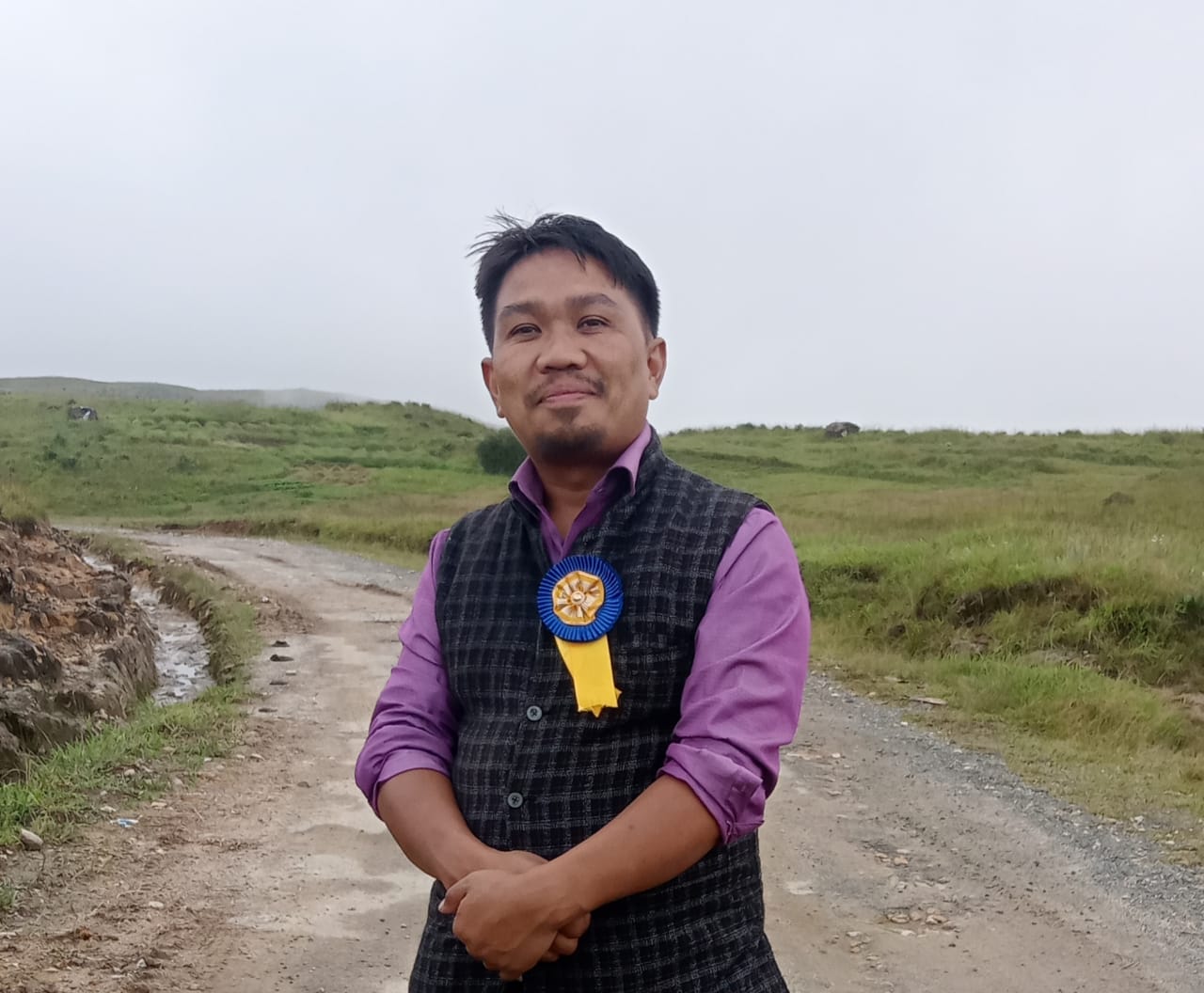Sympa made in the trunk of the tree
Experience
The Production of Organic Honey in Kongthong

Taste the Organic Sweetness of Kongthong
Pollination is a fundamental process for the survival of the ecosystem. Animals and insects pick up the pollen of flowers, spread it and allow plants and food crops to reproduce. Bees are some of the most common pollinators. They play a vital role in maintaining biodiversity, ensuring the regeneration of forests and the reproduction of plants. Due to the impact of human activities, they are increasingly under threat. To spread awareness and educate the public on the importance of bees and their contribution to the sustainable development of the environment, the UN has designated 20 May as World Bee Day.
In Meghalaya, the village of Kongthong is well-known for people calling and addressing each other with distinct melodies or special tunes. This has earned it the famous name of the Whistling Village. What many people do not know is that this is where beekeeping and bee harvesting are also quite popular.
Located in Khatarshnong Laitkroh Block, East Khasi Hills District, Kongthong has a total of 145 households. The village mostly consists of a farming population, but there are at least 40-50 households that practise beekeeping in the village. As a way of preserving the old practices, the villagers in Kongthong still use the traditional method of beekeeping. These bee boxes are traditionally made from the wood of a tree that has been cut down. A hole is then drilled in the middle where the bees will be able to reproduce and the honey is harvested.
Reproduction of Sweetness
The reproduction of the bees is also done in an organic way. Instead of manually taking the bees from one bee box to another, the bees are naturally reproduced by taking bees from the forest or from absconding hives. To reproduce the bee colonies, a ‘sympa’ is created. These are holes that are purposely drilled in the trunk of the trees in the forest. Absconded bees are usually attracted to the sympa, multiplying and reproducing twice a year. The first time they reproduce is in the months of October and November, and the second time is in March and April. After this reproduction, the bees are taken out of the sympa and transferred to the bee boxes to proliferate.

Traditional Bee Box in Kongthong
Harvesting the Honey
Harvesting of the honey is also done twice a year at Kongthong. The first round of harvesting is done from the second or fourth week of November, all the way to December and January. This honey is usually harvested from the Syndai Bee. It is considered the best species of bee because it produces high-quality honey. The second time honey is harvested during the months of March and April from the Pyrem Bee. The honey from this bee is not considered as good. It is not rich in flavour and it is low in medicinal value. Being produced during the hot season, the honey will not have fully ripened, resulting in honey that is of low quality.
Promotional Efforts
After harvesting, the honey is put into pots and oil cans that are later sold in the marketplace. There have been attempts to refine the production and marketing process of honey in Kongthong. One of these attempts was made by Shri Rothell Khongsit, the Chairman of the Meghalaya Rural Tourism Cooperative Federation Ltd. He implemented a few marketing techniques to promote honey processing in the village a few years ago. This included administering better packaging, labelling and improved marketing strategies for the honey produced. This had a positive impact on the beekeeping process in the village.

Pure Honey by Rothell Group of Marketing Agency, Kongthong Village
Medicinal Benefits
The refined presentation of the honey increased consumer trust in the product; the customers were impressed by the packaging and labelling. People also became more inclined to purchase honey, leading to an increase in the price and sales of honey. Apart from being a delicious natural sweetener, this honey is also used for many medical purposes. People drink honey with water to cleanse impurities from their bodies and they use honey on their skin to help treat bruises after an accident. Injuries are also treated with honey mixed with slaked lime.
Traditional Ways
The villagers in Kongthong still follow the traditional practices of the older generation. The production of food is purely reliant on mother nature. There are people who continue to follow the knowledge and guidance of the bees and nature itself. The honey from Kongthong is comparatively richer and healthier. This can be credited to the landscape and surroundings of the region. The vegetation and the flora and fauna here are still clean and undisturbed by human activities. Fertilizers or pesticides are also not used on crops or fruits by most farmers in the village. Inevitably, this attracts bees to pollinate in this region, making the bees more healthy and organic. This leads to the production of the most organic and natural honey.

Traditional Bee Box
Honey Experience
Experiencing the harvesting of traditional honey in Kongthong will be hard because it is usually done in the villagers’ houses. Currently, there is also no proper system in place that would facilitate this. However, there is a growing demand to witness the beekeeping processes. Because of this growing demand, tourists are now able to experience the process of beekeeping on request. Accompanied by a guide from the village, tourists can appreciate the world of beekeeping in Kongthong. They can experience the beekeeping process in all its stages; how the beekeepers take care of the bees, how they harvest the honey and how they clean the beehives. It must be noted that this demonstration can only take place during the high bee seasons. If a demonstration is conducted during the low seasons, it can disturb and abscond the bees. This will be a loss for both the beekeepers and the bees.
Activities
- Sightseeing in Kongthong
- Learn more about the whistling culture of the village
- Explore the Living Root Bridges
Hosted in which language: Khasi
Best months(s) to visit:
- December and January
- April and May (harvesting season)
- October and November (beekeeping process)
Amenities/Facilities available:
- Local guides
- Motorable roads

About the host: The person of contact is Bah Rothell Khongsit. Local guides will be responsible for facilitating the tour around the village. They will be showing and explaining the honey production and harvesting process.
Contact number and email of Host:
- Phone no: +91 9856060347


